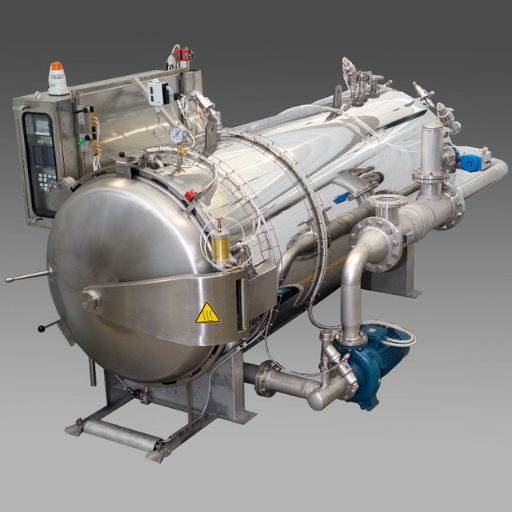Quality and safety must be maintained in today’s fast-paced food industry. Food producers increasingly use innovative technologies to meet their customers’ needs for fresh, safe, and healthy products. A machine known as a canned food sterilization machine is the vanguard of this transformation, offering a very efficient and effective way of guaranteeing that canned goods do not have bacteria that can make people sick. This blog will explore several ways these state-of-the-art machines enhance food processing, including prolonging the shelf life of items to conform to health regulations. Food processors will gain product quality with less wastage only when such technologies are integrated into their processes, thus making them more sustainable and profitable.
What is a Canned Food Sterilization Machine?
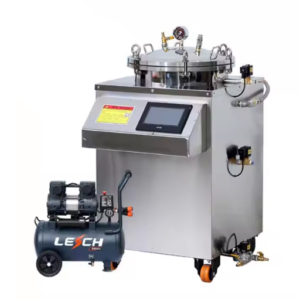
Image source: https://www.alibaba.com/
A machine explicitly designed for sterilizing canned foods by carefully heating them until all dangerous microorganisms die-off is called a sterilizer. During this process, closed cans are subjected to high temperatures within specific time limits, which kills the pathogenic bacteria, viruses, and yeasts while preserving their nutritional value and flavor. For instance, steam, hot water, or dry heat can ensure that products remain sterile, lengthening the period before they expire and consequently meeting food safety requirements. Their integration into food processing operations strengthens product safety and enhances overall production efficiency.
Purpose and Importance of Sterilization in Food Industry
Sterilization is an essential process in the food manufacturing industry designed mainly to secure food safety and long life. Sterilization aims to destroy harmful microorganisms causing food-borne illnesses to safeguard consumer health. However, this has its challenges in that farmers are required to cooperate, which may prove difficult for farmers who practice different farming techniques. Additionally, effective sterilization, as per reports from the industry, not only maintains the taste and nutrition quality of food but also expands its shelf-life, thus reducing spoilage and wastage. In addition, strict health regulations need proper sterilization methods that enable manufacturers to uphold quality assurance and build trust with consumers through compliance requirements.
Types of Sterilization Machines Available
Several types of sterilizers are used in the food industry, specifically designed for different applications and efficiency levels, among others.
- Autoclaves: These machines use steam under pressure to reach high temperatures. Thus, they effectively kill microorganisms and spores. Autoclaves are commonly used in canning processes, where sealed containers are subjected to aseptic conditions to preserve the contents.
- Dry Heat Ovens: Dry heat ovens sterilize food products and equipment without moisture using hot air circulation. This method can well treat materials that cannot withstand any steam or moisture; hence, packaging materials and glassware disinfection are often done this way.
- Radiation Sterilizers: These machines employ ionizing radiation, such as gamma rays or electron beams, to kill pathogens. Additionally, they can disinfect heat-sensitive products while maintaining quality and increasing shelf life; thus, their popularity is skyrocketing daily.
Each method offers unique advantages, enabling a food manufacturer to choose an appropriate technology based on his/her particular product needs or regulation compliance.
How Does a Canned Food Sterilizer Work?
Sterilization of canned food is achieved through a controlled process that combines heat, pressure, and time as it destroys harmful microorganisms and spoilage agents. First, sealed cans are put in the sterilizer and exposed to high-temperature steam or hot water under pressure. This environment effectively kills bacteria, yeasts, and molds while protecting the containers from breaking. The heat gets into the can, sterilizing its contents and ensuring food safety. Usually, the sterilization cycle starts with a preheating phase, followed by the actual sterilization phase, which takes a few minutes to hours, depending on the type of food and its specific properties. After the cycle ends, the cooling process must be rapid to stop further cooking and preserve product quality to last longer on the shelf.
How to Choose the Right Sterilization Machine
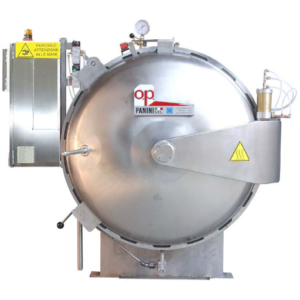
There are several considerations in choosing the suitable sterilization machine for your needs. Begin by evaluating the particularities of your product, like size, thermal tolerance, water levels, and moisture content. Opt for an option that has these characteristics; consider a radiation sterilizer if you have a heat-sensitive item as your product. Additionally, examine the volume capacity of this machinery versus how many items you need to be processed within a specified period. It ought to be ensured that the method complies with relevant regulatory requirements regarding food safety.
Furthermore, one should evaluate investment cost vis-a-vis long-term benefits such as extended shelf life or lower spoilage rates. Finally, one has to consider the ease of operating the machine, support or training provided by the manufacturer, and maintenance requirements facilities available for inclusion in production costs (costs). Suppose all these essential factors are carefully considered during the decision-making process. In that case, it will be possible for you to choose the proper equipment for sterilizing purposes according to the demands of your company at any moment.
Factors to Consider in a Food Sterilization Machine
Consider these main points when choosing a food sterilization machine.
- Method of Sterilization: Various methods, such as steam, dry heat, and radiation, have different merits and can be used in certain cases. Analyze the food product to identify the most appropriate method of sterilization based on its nature and packaging.
- Productivity: Before purchasing a machine, evaluate its throughput capacity to ensure your production needs are met. It is also worth looking for models that reduce cycle times without hampering proper sterilization.
- Compliance: Ensure the sterilizer meets regulatory requirements for local and international food safety standards. Depending on your area, this may encompass FDA or USDA guidelines.
- Maintenance Assistance: Consider the equipment’s maintenance schedule and after-sales assistance from manufacturers. Sound customer support systems plus accessible learning tools can have huge impact on overall efficiency.
- Cost and ROI: The purchase price and ongoing operational expenses should be considered together. Higher initial investment could be compensated by greater efficiency and lower spoilage rates.
These determinants are crucial during decision-making processes affecting general safety & quality levels of food commodities.
Comparing Different Models and Technologies
When comparing different models/technologies of food sterilization machines, evaluating their features in detail is essential.
- Steam Sterilization: This widely used technique is known for quickly eliminating microorganisms. Some top-of-the-range models typically have programmable settings for different kinds of foods with highly advanced temperature control systems ensuring a uniform heating process at all times.
- Dry Heat Sterilization: This technique is used mainly for items that do not tolerate moisture; it applies to high temperatures over long durations. Principal options in this range could comprise enhanced insulation & energy-saving properties, thus mitigating overheads incurred in running them on the scale.
- Radiation Sterilization: In contrast, radiation sterilizes precisely, making it ideal for maintaining the nutritional value of foods. Leading technologies featured would include electron beams or gamma rays, which penetrate packaging materials efficiently.
Examining these technologies’ specifications, usability, maintenance requirements, and cost-effectiveness can help operators make informed choices about their production goals for ensuring food safety and quality.
User Reviews and Reliability
When assessing the trustworthiness of food sterilization machines, user reviews from reputable sources can be very insightful. Some users mainly talk about machine durability, while others stress efficiency. Several users highly recommend units with short cycle times for sterilization and are easy to clean. For instance, machines with fast sterilization cycles and ease of cleaning have received several positive reviews because they are critical in upholding high food safety standards. Moreover, operators praise the dependability of customer care and manufacturer support services, adding that prompt help is crucial to minimizing downtime during operations. In conclusion, potential customers should scrutinize other users’ experiences before deciding to acquire one among many models available to avoid making a wrong choice.
Steps in the Sterilization Process

- Preparation of Materials: Clean each food item well to remove dirt, debris, and contaminants for the proper sterilization process.
- Packaging: Place the washed foods into suitable packaging that can withstand the chosen method of sterilization. This stage is important for preserving food wholesomeness while allowing it to be effectively sterilized.
- Selection of Sterilization Method: Select an appropriate sterilizing technology based on the kind of foodstuff under consideration, the preservation period required, and its intended purpose, such as heat, chemical radiation, etc.
- Execution of Sterilization: Apply your chosen method of sterilizing by strictly following the given time and temperature instructions. These conditions ensure the destruction of all microorganisms that might pose a danger.
- Cooling and Storage: If necessary, rapidly cool products after they have been sterilized, then store them under controlled conditions against quality deterioration or possible re-contamination.
-
Quality Control Monitoring: Regularly perform tests verifying whether essential stipulations concerning sterility were observed during processing stages, thus ensuring the absence of harmful microbes inside the packed product until its expiration date.
Preparing Canned Food for Sterilization
To ensure the safety and quality of preserved foods, one must follow some steps when preparing canned food for sterilizing meticulously. First, choose fresh, high-quality ingredients for optimal flavor and nutrition. Clean the food thoroughly before cutting it into appropriate sizes. Then, tightly pack the food into sterilized canning jars, filling them up to the recommended headspace as directed in canning guidelines. After filling the jars, add appropriate liquid to cover the food well, like water, broth, or syrup. Use sterilized rings and lids to seal the jars against contamination during the sterilization process. Finally, process according to recommended time and method depending on what type of food one is canning. This accurate preparation ensures that a person has conserved food that remains safe when there is a need for future use.
Setting the Appropriate Temperature and Time
Proper temperature and time setting are essential when canning food for effective sterilization. For low-acid foods like vegetables and meats, which include pressure canner at temperatures of 240°F (116°C) for the correct duration specified by canning guidelines, usually ranges between 20-90 minutes depending on the type of food being canned and jar size used – here you may say “usually from 20 minutes to 90 minutes” based on different types of foods and jar sizes). A boiling water bath canner works well for high-acid foods such as fruit pickle jams, which should be processed at 212°F (100°C) for about 5-15 minutes. It’s crucial to check specific canning recipes or guidelines from reliable sources such as the National Center for Home Food Preservation if both lecture notes are below. Microorganisms destroy last unless temperatures are maintained at certain correct times, which could be unsafe. Avoid this, ensuring the suggestions above below without anyone from occurrences or other publications instead because, thereby, it is accurate, however, and eventually only but practical.
Ensuring Complete Sterility
Maintaining total sterility throughout canning requires adherence to several vital practices. To begin with, always ensure that any tools and items used are neat and sterile, including canning jars, lids, and other utensils. Jars should be washed in hot, soapy water or run through a dishwasher cycle on a hot setting before canning. In addition, lids need to be sterilized according to the manufacturer’s instructions, which include simmering them in water. When packing food into jars, removing all air pockets by running around the insides with a non-metallic spatula before sealing off air-tight is essential. By so doing, this step ensures that spoilage via defective seals does not occur. Finally, check if the lid does not flex when pressed down at the center; this means the jars have been sealed correctly after processing. Following these practices helps eliminate undesirable bacteria, yeast, and molds, thus ensuring that what one consumes is safe.
Benefits of Using a Food Autoclave Sterilizer
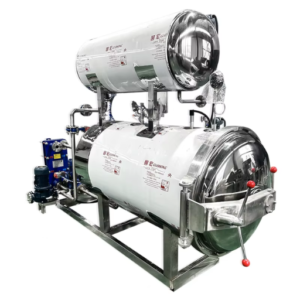
There are several essential advantages of using a food autoclave sterilizer for preserving food. Firstly, through high temperature sterilization it effectively kills many microorganisms including bacteria, viruses and spores thereby making preserved foods safe and durable. Additionally, nutrient losses are minimized compared to traditional methods; hence, quality and flavor are retained. The ability to control time and temperature accurately improves consistency, thus minimizing chances of spoilage. Lastly, autoclaves are flexible since they can accommodate different sizes of jars and types of foods. This makes them useful for both commercial and home-based food preservation.
Enhanced Food Safety and Quality
To enhance food safety and quality, it is essential to use a food autoclave sterilizer to ensure that all harmful microorganisms are successfully eliminated while processing preserved food. Research also shows that due to its high pressure and temperature, an autoclave destroys pathogens while preserving vitamins and minerals in foods more effectively than other methods. Moreover, autoclaving produces consistent and reliable results; thus reducing potential for spoilage as well as food contamination thereby ensuring both safety and sensory attributes of processed foods are maintained. It brings peace to the user since they know their preserved foods are safe to eat and more nutritious.
Extended Shelf Life of Canned Products
Canning is one of the most effective methods used in expanding the shelf life of various foods, often via autoclaves, which sterilize contents inside them. Well-canned goods typically last one to five years, depending on food type and storage conditions. Airtight packaging prevents spoilage by killing microbes or causing situations where these organisms cannot survive because they need oxygen, while high heat removes pathogenic germs. Additionally, advances in canning technology, like better sealing techniques and BPA-free materials, have made it possible to have longer shelf life without compromising product safety or quality. Properly stored canned goods retain their taste and nutritional content, making them an ideal solution for long-term preservation.
Cost Efficiency in Large Scale Food Processing
To maximize their profits and ensure the process’s sustainability, food processing at a scale should be cost-effective. Using robotics and other advanced technological systems can significantly reduce labor costs and boost production efficiency. Many companies are adopting lean manufacturing principles that focus on minimizing waste while maximizing productivity. Bulk purchasing of raw materials, for example, reduces costs per unit, and energy-efficient equipment and practices help lower operating expenses. In addition, regular maintenance of machinery allows them to perform at optimum levels, thus reducing downtime and associated costs. This way, food processors would achieve high overall profitability, keeping up with market competition.
Maintenance and Troubleshooting of Sterilization Equipment
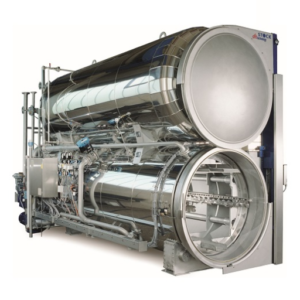
Sterilization equipment must be appropriately maintained for effective operation and adherence to food safety standards. Frequent inspections have to be done in order to identify any wear or damage, especially on sealing, gaskets, or valves. Cleaning must follow the manufacturer’s instructions not to compromise cleanliness and efficiency. Start troubleshooting common ones like inaccurate temperature readings or pressure fluctuations; they can often be fixed by recalibrating sensors or changing the damaged parts. Also, maintenance records should be kept detailing all events surrounding operations, including faults experienced while at work, thus indicating recurring issues that may need proactive corrective measures. Through such adherence, a processor can ensure that his or her sterilization equipment works optimally without breaking down frequently.
Routine Cleaning and Upkeep
Sterilization equipment needs routine cleaning and maintenance to avoid contamination or performance inconsistency. On the other hand, cleaning frequency can be determined by how often the equipment is used and what it processes. At times, daily, weekly, or monthly tasks such as thorough sanitization of surfaces and components are involved. For deep cleaning, according to manufacturer instructions, the device should be dismantled that may have bacteria or debris hiding in it. Furthermore, using approved detergents that do not affect the integrity of the equipment materials is essential. Lastly, these procedures must be taught to staff so that all parties concerned will learn why cleanliness is vital and how they will clean food processing systems more effectively.
Common Issues and Solutions
Mechanical sterilization may fail because biofilm adhesion leads to ineffective sterilization cycles. Regular checks can identify this problem, while using enzymatic cleaners with a more strict cleaning regime may help eliminate difficult-to-remove biofilms. Other issues include blocked steam paths or poor loading practices, which result in inadequate steam penetration through sterilized materials. To prevent this challenge, items should be loaded for optimum steam flow, which means they must always load items correctly based on where the steam has been designed to flow through during sterilization processes at high temperatures. Finally, maintaining correct temperature levels during cycles could also pose a challenge for users caused mainly by thermostat failures or sensor errors. In contrast, regular calibration together with replacing faulty sensors would significantly reduce inaccurate readings of temperature hence improve reliability in sterilizing processes.
Professional Support and Services
It is beneficial to have professional assistance when discussing sterilization equipment maintenance and safety concerns. Leading providers offer complete packages that include regular servicing, emergency repair, and compliance audits. Companies like Steris, Tuttnauer, and Getinge provide expert advice on optimizing sterilization procedures and ensuring equipment effectiveness. Their experienced engineers can thoroughly examine and deploy advanced sanitation methods to fit specific equipment models. Moreover, these services often involve training courses for the staff members so that they can be well versed with best practices and maintenance processes, thus creating a safe working environment that is also more productive. By involving these reputable practitioners in getting rid of risks associated with sterilization equipment, a company protects employees from hazards faced at operation sites. Also, it ensures that the regulator’s rules are met.
Future Trends in Food Sterilization
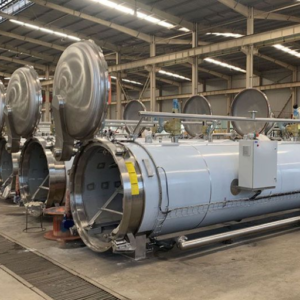
Several vital trends shape the future of food sterilization as technology progresses. One particular trend is the growing adoption of non-thermal methods such as High-Pressure Processing (HPP) or Pulsed Electric Field (PEF) Technology, among others. Unlike conventional heating procedures, these approaches are known for preserving the nutritional value and taste profiles of foods while extending shelf-life without affecting their quality. Also, intelligent technologies such as IoT devices for real-time monitoring and data analytics are being integrated into the process. With this in place, it becomes easier to control sterilization parameters, thus resulting in increased efficiency in preservation operations through predictive maintenance programs for each machine used. Additionally, sustainable initiatives have gained prominence, leading to the development of eco-friendly techniques that will minimize water consumption and energy use, thereby lowering environmental impacts during processing activities to meet international objectives. Inventions regarding this sector will redefine safety standards set by food sterilizing processes, making them safer, more effective, and environmentally friendly, thus ensuring a promising tomorrow.
Innovations in Sterilization Technology
Sterilization technology has recently undergone innovations that make food processing safer and better. For instance, one significant advancement involves using the cold plasma technique, which utilizes ionized gas to kill a wide range of microorganisms without affecting the temperature of the materials, hence maintaining the food quality. Equally important is the introduction of ultraviolet (UV) light, especially UV-C type, that can effectively lead to inactivation of pathogens on food surfaces and water minus chemical applications. Moreover, modern trends in antimicrobial packaging materials, such as those that restrict bacterial development, are emerging, expanding the product’s shelf life. All these developments show an increasing concern for safe foods and sustainability through meeting consumers’ expectations.
Regulatory Developments and Compliance
Regulatory institutions are tightening compliance standards globally as the focus shifts towards ensuring effective sterilization techniques. The Food and Drug Administration (FDA) in America and the European Food Safety Authority (EFSA) are reviewing their guidelines to incorporate novel technologies like cold plasma or UV-C sterilization. Food producers must adhere to these requirements and test exhaustively while documenting evidence before affirming their sterilizing processes are safe. Besides, ongoing personnel education regarding new legislation and advancements in technology remains a crucial tool for complying with rules laid down by regulators. Further, integrating legislative updates concerning food safety into the company’s systems can help lessen difficulties faced during compliance audits, including smooth running checks on conformity.
Sustainability and Environmental Considerations
Sustainability in food safety and processing is becoming more prevalent as firms try to minimize their environmental impact while still protecting customer well-being. Many companies are adopting eco-friendly packaging options while renewable energy sources are being used to run day-to-day operations. Additionally, circular economy concepts are increasingly gaining traction, where waste products are given alternative uses so they do not find their way into dumping sites. Moreover, sustainable sourcing of raw materials is essential since it supports local communities and reduces carbon emissions from transportation. This all-encompassing approach towards sustainability ensures the alignment of food safety initiatives with environmental objectives, thus leading to a more responsible and robust food system.
Frequently Asked Questions (FAQs)
Q: What is a sterilizing machine and how can it benefit the food processing industry?
A: A sterilizing machine is a piece of equipment used to eliminate viable microorganisms in food through various methods such as heat, steam, or chemicals. It benefits the food processing industry by ensuring food safety, extending shelf life, and maintaining food quality, thus helping companies meet regulatory requirements and consumer expectations.
Q: How does a sterilization retort machine work?
A: A sterilization retort machine heat-seals food within containers such as glass jars or metal cans using high temperature and pressure. The machine destroys bacteria and other pathogens, making food safe for consumption. It typically includes features like water spray and steam autoclave sterilizer to ensure even heating and sterilization.
Q: What is the difference between pasteurization and UHT using a food sterilization machine?
A: Pasteurization involves heating food to a moderate temperature for a short period to kill most pathogens without spoiling the food’s taste and nutritional value. On the other hand, UHT (Ultra-High Temperature) sterilization heats food to a much higher temperature for a few seconds, effectively sterilizing the food and giving it a longer shelf life. Both methods are used in food sterilization machines depending on the desired outcome.
Q: Why should I use a microwave sterilization machine in my food processing line?
A: A microwave sterilization machine offers quicker processing times and uniform heating, which can enhance the sterilizing process’s efficiency and quality. It benefits delicate food items that may not withstand the pressure and high temperature utilized in traditional sterilization methods. You can get wholesale machines from suppliers such as those on alibaba.com.
Q: Can a food sterilization pot be used for solid and liquid foods?
A: A food sterilization pot is versatile and can be used for solid and liquid foods. It uses steam or hot water to sterilize food sealed in containers, ensuring that viable microorganisms are eliminated and the food is preserved safely.
Q: What role does a sterilization basket play in a sterilizing machine?
A: A sterilization basket holds the food containers securely within the sterilizing machine, ensuring even exposure to heat and steam during the sterilization process. This helps in achieving consistent and thorough sterilization across all food containers.
Q: How does a steam autoclave sterilizer function in food processing?
A: A steam autoclave sterilizer uses steam under high pressure to sterilize food containers. This method is highly effective in killing all types of microorganisms, making it a preferred choice in food processing to ensure safe, long-lasting food products.
Q: What advantages does water spray sterilization offer compared to other methods?
A: Water spray sterilization ensures even temperature distribution and quicker cooling times, which can improve the efficiency and safety of the sterilization process. It is particularly beneficial for jarred or canned food products that require precise temperature control.
Q: What is the purpose of the high-temperature settings on a sterilizer machine?
A: High-temperature settings on a sterilizer machine are crucial for effectively killing pathogens and ensuring the safety and longevity of food products. These settings allow for thorough sterilization, essential for maintaining food quality and safety standards.













